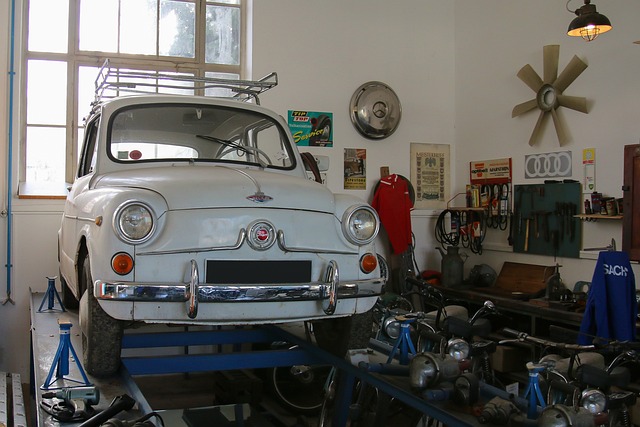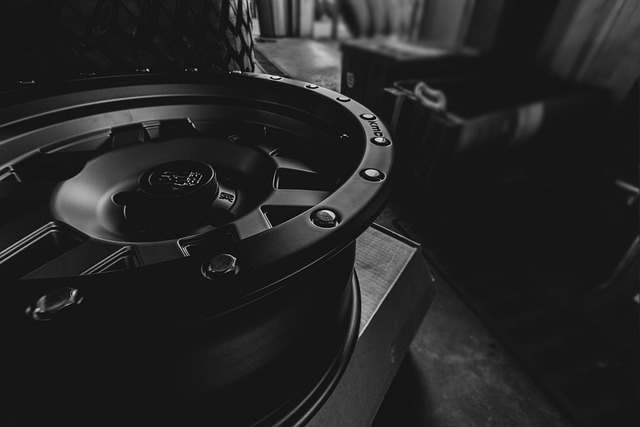Unveiling Auto Body Shop Parts for Timeless Classic Cars
Restoring vintage cars requires precise auto body shop parts to maintain historical accuracy and str…….
In the vast and ever-evolving automotive industry, the role of auto body shop parts cannot be overstated. These specialized components are the building blocks that transform a bare car frame into a fully functional vehicle, playing a critical role in safety, aesthetics, and overall performance. This comprehensive article aims to delve into the intricate world of auto body shop parts, exploring their diverse aspects, global impact, economic implications, technological innovations, regulatory framework, challenges, and future potential. By the end, readers will gain an invaluable understanding of this essential industry segment and its profound influence on both consumers and the global economy.
Auto body shop parts, in their essence, are the structural and decorative elements that constitute a vehicle’s exterior. This category encompasses a wide array of components, each serving a distinct purpose:
Historically, auto body shop parts have evolved alongside advancements in vehicle design and manufacturing. From the early days of simple metalwork to the contemporary era of precision engineering and advanced materials, these parts have become increasingly specialized and complex. Today, they are crafted using a mix of traditional metals (like steel and aluminum) and innovative composite materials, each offering unique advantages in terms of strength, weight reduction, and corrosion resistance.
The global auto body shop parts market is a testament to the industry’s immense scale and reach. According to recent industry reports, the market size was valued at USD 437.5 billion in 2021 and is projected to grow at a CAGR of 6.8% from 2022 to 2030. This growth can be attributed to several key factors:
Regional analysis reveals interesting dynamics:
The economic landscape of auto body shop parts is complex and interconnected, impacting both manufacturers and consumers. Key considerations include:
Technological innovations have been a driving force behind the transformation of auto body shop parts, pushing them towards greater efficiency, safety, and sustainability. Some notable advancements include:
The auto body shop parts industry is subject to a myriad of policies and regulations designed to ensure safety, environmental protection, and fair trade practices. These include:
Despite its growth and technological advancements, the auto body shop parts industry faces several challenges that require innovative solutions:
Toyota Motor Corporation has been a pioneer in hybrid electric vehicles (HEVs), showcasing the potential of advanced auto body shop parts. Their Prius model, introduced in 1997, featured unique design elements to accommodate the hybrid system, such as a lower center of gravity and efficient aerodynamic packaging. This case illustrates how vehicle design and body shop parts can work in harmony to enhance fuel efficiency and environmental performance.
Tesla, an electric vehicle (EV) manufacturer known for its disruptive technology, has also mastered the art of customization. Customers can configure their vehicles with a wide array of options, including various color schemes, interior materials, and wheel designs. This strategy not only caters to individual preferences but also showcases the flexibility and scalability of modern auto body shop part manufacturing processes.
A small garage in California has gained recognition for its innovative use of 3D printing technology in auto body repair. They can print custom-fit replacement parts for classic cars, offering a cost-effective and time-saving alternative to traditional manufacturing methods. This case highlights the potential of advanced manufacturing technologies in niche markets, personalizing vehicle restoration experiences.
The future of auto body shop parts promises exciting possibilities, driven by technological advancements and evolving consumer demands. Key trends include:
Strategic considerations for manufacturers include:
Auto body shop parts are more than just components; they are the backbone of modern automotive design, safety, and sustainability. This article has provided a comprehensive overview of their role, global impact, economic significance, technological advancements, regulatory landscape, challenges, and future prospects. As the industry navigates an era of rapid electrification, autonomous driving, and connectivity, auto body shop parts will continue to evolve, shaping not only vehicles but also our daily lives.
Q: What are the primary materials used in modern auto body shop parts?
A: While traditional metals like steel and aluminum remain prevalent, advanced composite materials such as carbon fiber reinforced polymers (CFRP) are gaining popularity due to their superior strength-to-weight ratios.
Q: How do safety standards impact auto body part design?
A: Safety regulations govern various aspects of vehicle construction, from impact absorbers and crumple zones to collision avoidance sensors and airbag systems. These standards drive the development of specialized body shop parts that enhance vehicle safety without compromising aesthetics or performance.
Q: Can you explain the role of 3D printing in auto body repair?
A: 3D printing enables the rapid production of custom-fit auto body parts, especially for rare or hard-to-source components. It offers cost and time savings, as well as the potential for more intricate designs, making it ideal for niche restoration projects and personalized vehicle customization.
Q: What are some emerging trends in EV body shop parts?
A: Electric vehicles demand unique body shop components tailored to their specific architecture, including lightweight materials like aluminum alloys and advanced battery integration systems. As EV adoption grows, so does the need for specialized parts manufacturers.
Q: How do counterfeits affect the auto body shop industry?
A: Counterfeit parts pose significant safety risks and erode consumer confidence in vehicle integrity. To combat this issue, industry stakeholders are implementing improved tracking technologies, enhancing security features in parts, and raising consumer awareness through education campaigns.

Restoring vintage cars requires precise auto body shop parts to maintain historical accuracy and str…….

Auto body shop parts are critical for safe, effective vehicle restoration after accidents. Inspect p…….

Using approved auto body shop parts is crucial for top-quality vehicle paint repair and overall coll…….

Backorders of auto body shop parts (a common issue due to manufacturing disruptions, rapid tech adva…….

The automotive industry is transitioning towards sustainability as consumer environmental awareness…….

Auto body shop parts are vital for vehicle restoration, requiring careful verification to ensure qua…….

The compatibility of auto body shop parts is paramount for achieving quality repairs, maintaining st…….

Auto body shop parts are essential for restoring damaged vehicles, requiring accurate matching for b…….

In the competitive auto body repair industry, efficient order tracking for specialized parts is key…….

Auto body repair is an art involving meticulous disassembly, restoration, and reassembly of vehicle…….